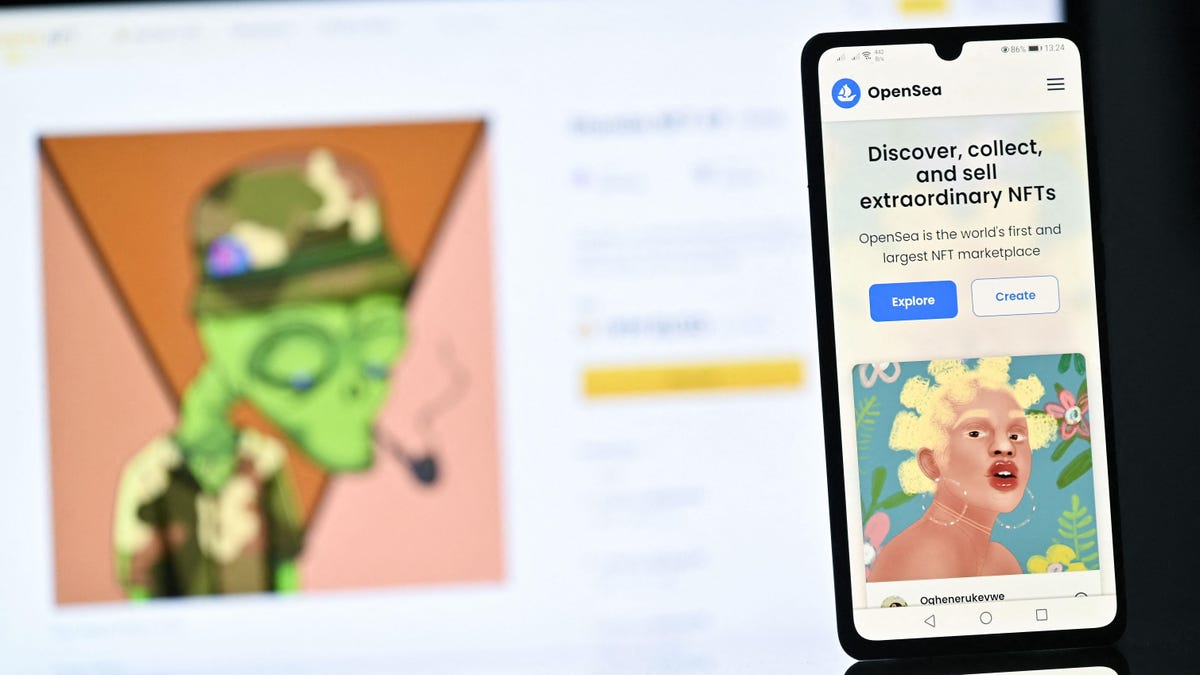NFTs were supposed to be a wonderful thing: helping artists maintain control over their own work. I’m not against that at all. But as interest in NFTs has seemingly boomed and busted in the recent years, so too has whatever integrity the world of NFTs had. Forgery and counterfeit pieces are running amok, and artists and buyers are becoming targets. Buyers have had NFTs stolen during phishing attacks, and artists have had their own work stolen and minted as an NFT without their permission. Bummer. For a technology that is so obsessed with being bulletproof and valuable, it sure seems easy to game the system.
2 / 9
Actor, writer, and producer Seth Green is the victim of a phishing scam with four of his most coveted NFTs caught in the crossfire. Green revealed on Twitter that he was phished on a phony version of Gutter Cats, a website with NFTs similar to Bored Apes, that features dogs and cats with tattoos and piercings. Green also encouraged people not to purchase or trade the stolen NFTs until the matter could be resolved. One of the NFTs was bought by DarkWing84, and Green asked DarkWing84 to get in contact to “fix it.”
3 / 9
Aja Trier is a Texas based artist who specializes in colorful and fantastical adaptations of Vincent Van Gogh’s “Starry Night,” typically featuring cats and dogs. In January 2022, Trier claimed on Twitter that her art was stolen and licensed on OpenSea (one of the most popular NFT hubs) nearly 86,000 times. Trier filed a DMCA report and further tweeted that they expected bots were responsible. While OpenSea was able to remove the collection of Trier’s stolen work, later that month Trier revealed that someone was using her identity to sell NFTs of her own work.
4 / 9
In April, the Bored Ape Yacht Club, one of the largest collections of NFTs, was the victim of a phishing attack. According to CoinDesk, the Bored Ape Yacht Club’s Instagram and Discord were hacked with a link sent out to users that led them to a copycat Bored Ape Yacht Club website. Here, users connected their MetaMask wallet to the scammers’ wallet, and the rest is history. CoinDesk reported that 54 NFTs were stolen, totaling $13.7 million.
5 / 9
One of the appeals of listing NFTs on OpenSea was the ability to circumvent its “gas fee,” which is basically how much it costs for a miner to write data to the blockchain. OpenSea used to offer artists the ability to mint their work without paying the gas fee using a tool on their website. However, OpenSea stated on Twitter in January that 80% of the art created with the lazy minting tool were spam or plagiarized works. In February, they later clarified that 80% of the NFTs the website removes are spam or plagiarized, indicating that the actual rate of plagiarized work could be higher.
6 / 9
The biggest fear any artist could have is having their work stolen, and as we’ve previously observed, it can happen in the world of NFTs. Most times, an artists work is minted right under their nose, but a Twitter account was in the business of minting tweets instead of artwork. The Twitter account “tokenizedtweets” was peddling an NFT con where the account owner would mint NFTs from artist tweets, with their work being caught as collateral damage. Artist RJ Palmer brought the scam to light with a screenshot of his own tweet falling prey to tokenizedtweets, which has since been suspended from Twitter.
7 / 9
Corbin Rainbolt is a paleoartist: an artist who specializes in work depicting dinosaurs and extinct subjects. In March 2021, Rainbolt tweeted that one of his paintings was uploaded as an NFT without his knowledge. As a result, he scrubbed his Twitter, and reuploaded his work with watermarks. Vice reported, however, that in a cruel twist of fate, his tweet complaining about his artwork being stolen was turned into an NFT.
8 / 9
August Sander was a German photographer, whose work is currently featured in the Museum of Modern Art. Sander’s work was a part of a recent archiving effort called the “August Sander 10K Collection,” where his work would be made available as NFTs on OpenSea by Sander’s great-grandson Julian. According to The Art Newspaper, the only problem was that Julian Sander apparently does not own the the copyright to August Sander’s work, and thus the collection (which consisted of over 10,000 pieces of August Sander’s photos) was promptly pulled from OpenSea.
9 / 9
Author
Administraroot


